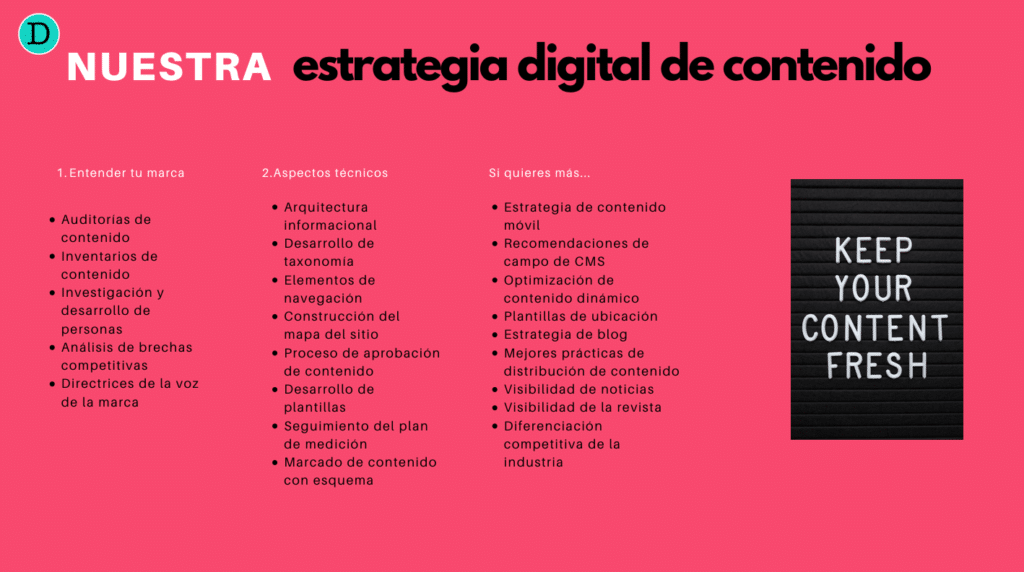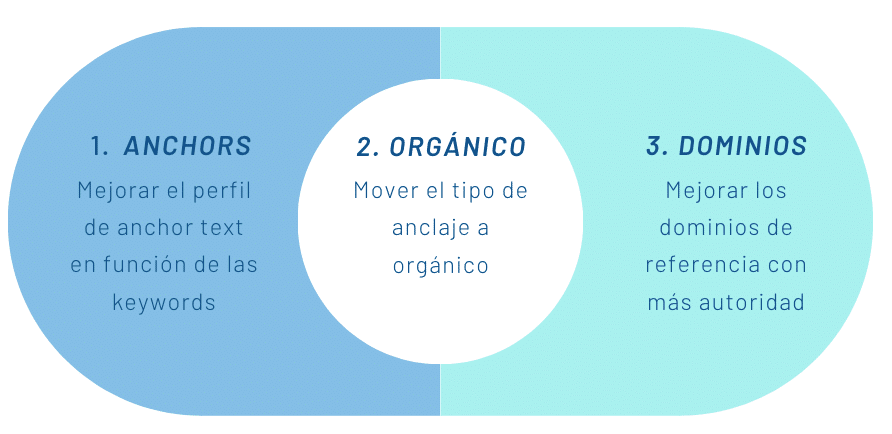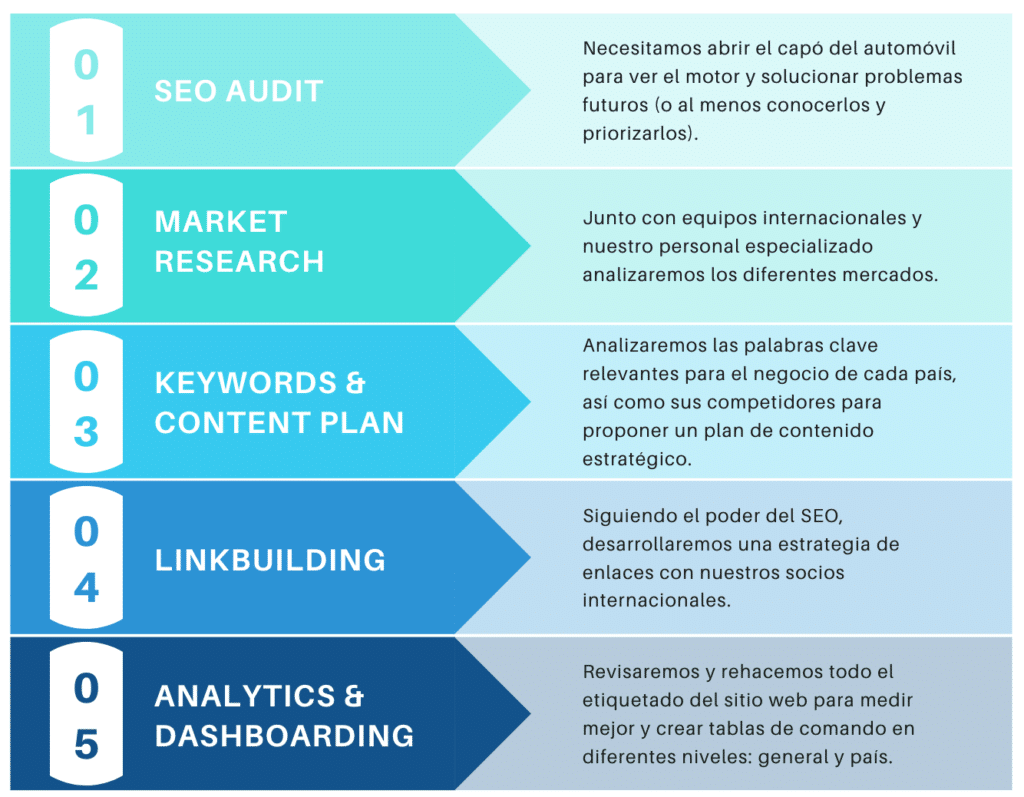Do you think your customers are in various marketsCan your company's products or services be distributed worldwideDo you think there is a demand in the digital market for these and that you can explore it at the online search level?
Then you have a simple answer and it's called International SEO and we are you SEO agency international 🙂
What is international SEO?
We could define international SEO strategy as the set of techniques that are used to manage the digital presentation of a company in relation to different types of consumers that speak different languages and live in different countries or regions.
Google (and the other search engines) makes a lot of effort to understand the target audience of a website, and takes many factors into account.
Our job is to make it as easy as possible for Google to crawl these pages and to make it as easy as possible for you to understand them. For this reason, any gelocalisation signal is little to make the seeker's life easier.
International SEO refers to the set of techniques used to manage the digital presentation of a company in relation to different types of consumers who are interested in the company's products and services. speak different languages and live in different countries or regions.
But where do you start with international positioning? Is it easy or difficult to position yourself in other countries?
At DDigitals, we have already faced different international SEO projects and we are very clear about the way forward.
How to make an international SEO plan

Let us start at the beginning.
A international SEO agency can start an international segmentation project in one of two ways: right or wrong.
My recommendation is that you do it the first time, otherwise you will waste hours, money and the work of many valuable people.
Getting it right is not that complex either, just start with these three points:
- Think and then execute.
- Find the suitable partnerNot everyone can implement this type of project.
- Visit advise by SEO professionals.
Once you have this in the forefront of your mind, bear in mind the The foundations on which any international SEO strategy is built:
- Specify the country and / or region of the website with a url structure that is suitable for the international segmentation. That is to say, to orientate the page to a country.
- Set up correctly for which language or languages are oriented pages, language tags (hreflang) will be used for this purpose.
- Generating content for each of the country-language consumers.
Any international SEO project is based on these three points, my recommendation is that you should you have them well defined before you startOtherwise, it will be very complicated and very costly to straighten it out. a posteriori.
1. Local market research
To position a web page in another country or countries lhe first thing we have to control is the market to which we are going to address.
And controlling the market is not about keyword reseachbut to make a market research deep in the country.
At DDigitials we have parterships with local destination agencies. who help us with this research, since it is impossible for anyone to control the jargon, manners and local sensitivities of a country outside their own or a particular region.
Of course, it also we work hand in hand with our clients who are the ones who have the market intelligence and who provide us with valuable information.
We talk to your marketing managers, your sales force or your local agencies, in order to get the best out of you. outlining an international strategy that has a global and not a shredded meaning.
By the way, you might be interested in the post on Online marketing trends for 2022where I talk about this tendency to centralise strategy and execution in a single company to achieve strong alignment.
Some of the benefits of conducting market research are:
- Understand which search engines are usedThe Eupean is not the same as a Russian, for example.
- How I am looking for potential clients, because my English is not the same as the English of an Englishman (I can assure you that).
- The motivations search, what is hidden underneath is the search intent.
- The size of companies in each country.
- The investments.
- The value perceptionThink about the price that consumers in one country or another are willing to pay.
- The devices.
- The NETWORK connectivity.
I could go on, but I think you can get an idea of how important it is. to rely on a country's indigenous wisdom.
Don't hesitate, if you can get someone local to start the project, do it.
2. Web architecture, the soul of the international SEO strategy
You exist different url structures that can be implemented in this type of project.
This is one of the most important keys to international SEO.The type of structure conditions the strategy.
That is to say, depending on the direction in which where you want to run the businessIf the two structures are more beneficial in achieving objectives, one structure or the other may be more beneficial.
These structures include using domains called ccTLD (code top-level domain)subdomains, subdirectories or subfolders.
The first thing to keep in mind is that this choice is segment countries and not languages.
ccTLD domains
This type of domain limits the website to a specific geographic areaThey look like this.
www.ejemplo.es
What we are talking about here segmentation is the country and not the language.
In other words, it seems obvious (and Matt tells us so in the previous video) that if we choose a domain with an ending such as .en presumably the content will be targeted at the Spanish marketl.
Google indicates which are the advantages and disadvantages of using this type of domain namebut I will summarise them for you here:
| Domain type | Advantages | Disadvantages |
|---|---|---|
| www.ejemplo.es | You tell Google very clearly which market you are targeting. | It is much more expensive |
| No matter where your server is located | You need more infrastructure at all levels | |
| Sites (different languages) can be easily separated | There are restrictions depending on the type of domnimo |
One of the major drawbacks of this strategy (which, in the end, is to have a different domain per country) is the SEO maintenance costWe would be talking about totally independent websites.
This type of international strategy therefore requires a lot of financial muscle.
One company that has adopted this strategy is Amazon (amazon.es, amazon.it, amazon.fr), for example.
Subdomains
This choice is halfway between a main domain and sub-folders.
It consists of carrying out a country segmentation with third level of mastery.
Google calls them "generic top-level subdomains" and that is what they are:
www.es.ejemplo.com
| Domain type | Advantages | Disadvantages |
|---|---|---|
| www.es.ejemplo.com | The configuration is simple | We lose UX as a user or customer may be confused as they do not understand whether they are in a certain country or in a certain language. |
| We can rely on the geographic segmentation of Google Search Console. | ||
| Servers do not have to be in the same location, which is beneficial for international SEO. | ||
| We can easily separate the sites |
One example is WordPress which uses this system to divide its territories.
Subfolders or subdirectories
In this case, the countries hang from the main domain.
wwww.ejemplo.com/es/
In this case, the domain authority is transmitted to all sub-directories, so that when positioning a website in another market, the link juice can be shared out.
However, it is a more complex strategy to manage and, moreover, it can only be in one country. single serverwhich may affect the loading speed of the website.
Recommended reading: Do not shoot at the loading speed.
| Domain type | Advantages | Disadvantages |
|---|---|---|
| www.ejemplo.com/es/ | Its configuration is simple | We lose UX as a user or customer may be confused as they do not understand whether they are in a certain country or in a certain language. |
| We can use Google Search Console | The server can only be in one location | |
| By being on the same hosting, we reduce costs. | It is more complicated to separate the sites |
Nike has opted for this configuration (nike.com/en/ nike.com/fr/, nike.com/it/).
gTLD with parameters
I can already tell you that this option Google advises against it.
It consists of using the main domain and parameterise it according to the user's country.
www.ejemplo.com/?loc=es
| Domain type | Advantages | Disadvantages |
|---|---|---|
| www.ejemplo.com/?loc=es | Not recommended by Google | Targeting by url becomes more complicated |
| Users will not recognise geographic targeting | ||
| We could not use Google Search Console |
If you want to know more about how these parameters work, take a look at these contents.
3. Language segmentation
There are a couple of concepts that need to be clear before proceeding: language and regional variant of a language.
A language is an abstraction of language that materialises in regional varieties.. So we can have Spanish (from Spain), but also Spanish from Latin America.
If we continue segmenting, we will find that, for example, in LATAM we also have regional varieties of Spanish.
A language is an abstraction of language that materialises in regional varieties.. So we can have Spanish (from Spain), but also Spanish from Latin America.
Thus, we find Spanish from Mexico, but also Spanish from Colombia or Peru, these varieties can be indicated to Google, if strategically relevant.
I recommend that you take a look at the video above; it talks about the most common mistakes that are made when indicating to Google the localised versions of your website.
When it is recommended to indicate to Google an altered version of a website
According to the search engine itself, there are three cases where we have to tell Google that we have variants of a website:
- The main content is in a single language and only the template is translatedi.e. the main menu and the page request.
- Regional variations of the same language exist with similar content where change words according to region (think, for example, of Spain, Mexico, Argentina).
- There is content that is translated in full into different languages, such as our website: www.ddigitals.net and www.ddigitals.net/es/.
In these three cases it is recommended that make it easier for Google to understand the content we generate for the user.
Main problems of language targeting in search engines
These are the most common problems encountered by search engines in distinguishing content in different languages.
- There is a url created for a specific user but the search engines will not find it omit.
- The search engine finds two almost identical urls for a site when they are, in reality, different (we confuse the user).
- The search engine does not detect that new pages have been created and therefore removes them from the search results.
Our question is, then how we can avoid some of these three cases?
Sending signals to the search engine that we have created alternative language versions of a web page with the famous hreflang.
Hreflang and segmentation by language and regional variety
The famous label rel="alternate" hreflang=" is supported by Google in December 2011 so that the webmasters can tell Google the language or the linguistic variants of a website.
In this sense (and now it is) this is the way to segment by language.
Remember, in any case, that hreflang is a signal and not a directiveGoogle is therefore not obliged to listen to it.
How and where can hreflang be implemented?
Google makes it very clear: choose only one implementation, does not need to be implemented everywhere.
So it is in these three ways, we will choose one.
- html tags.
- http headers.
- Sitemap.
That is to say, you do not need to implement this tag everywhere on the website.being in one place is more than enough.
In the code of your website, this tagging will look something like the following:
Widgets, Inc .
<link rel="alternate" hreflang="en-gb"
href="http://en-gb.example.com/page.html" />
<link rel="alternate" hreflang="en-us"
href="http://en-us.example.com/page.html" />
<link rel="alternate" hreflang="en"
href="http://en.example.com/page.html" />
<link rel="alternate" hreflang="de"
href="http://de.example.com/page.html" />
<link rel="alternate" hreflang="x-default"
href="http://www.example.com/" />
As this is not a technical tutorial, I'll leave here the link to how to implement themif you're interested in a bit of freak rock.
Combining geographic and language targeting
I hope it is clear that geographic targeting and language targeting is achieved by different way and is the combination of both what makes an efficient international website.
The following table gives an example of some of these. geolocation and language combinations to make this clearer.
| Url | Browser interoperability | Type of segmentation | Nomenclature |
|---|---|---|---|
| www.ejemplo.es | Users in Spain | Country | ccTLD |
| www.en.ejemplo.es and hreflang=en | English speakers in Spain | Country and language | ccTLD + subdomain |
| www.en.ejemplo.com and hreflang=en | English speakers in the world | Language | Subdomain |
| www.ejemplo.es/en/ + hreflang=en | English speakers in Spain | Country and language | ccTLD + subdirectory |
| www.ejemplo.com/en/ + hreflang=en | English speakers in the world | Language | ccTLD + subdirectory |
In addition to these combinations there are other signs that can be activated to make it easier for google to understand the language of your website.
- Host the website in a local server.
- Linking content to websites hosted in the same country or where the content is crazy.
- Get links to local websites.
5. Make an international content plan

The international content plan must be adapted to the dialect varieties, product and market behaviour.
In this respect, we may have to make a number of changes.ew content or adapt existing content.
It is also possible that the searches are similar and that the same content can be used, which is sometimes great.
Never do an automatic translation of content as Google perceives it as spam.
The content plan must always be linked to the commercial objectives or branding; because nothing makes sense if we don't back it up with data and mediate it correctly.
To get to this point and really make a international SEO content plane apply a well-defined methodology consisting of:
- Finding the voice of the brand.
- Analyse and audit content that is made to understand what makes sense and what doesn't, and what we can and can't take advantage of.
- Team meetings to learn about the local market.
- Understanding the competitive gap among the brand's direct, indirect and aspirational competitors.
From this point on, it will make sense that international content generation.
6. Local servers and CDNs
You have probably opted for an e-commerce company or service website when setting up your company's e-commerce or service website. structure to reduce costs.
Some of these structures, which have already been discussed above, can only have one single server.
Of course, this is not good for SEO. Since the requests from a user (I'm making this up) living in London to a website hosted in Spain will take longer than for a user making the query from Spain.
And the speed is a clear SEO factor for Google.
Good.
One of the solutions to consider and worth taking into account are CDNs (Content Delivery Network).
These serve to accelerate loading speed of websites that cannot be hosted on different servers and are penalised in terms of loading speed.
It is a simple way to improve the experience of an international user.
7. International Scorecard
In an ideal world, customers foresee what they need on a technical level to develop its business strategy.
However, nothing could be further from the truth.
In the end, companies are living animals that grow organically and are built up little by little; so not everything is perfect and not everything can be perfect.
For this reason, when we work with international clients we are not surprised to see, in many cases, how disaggregated the data and strategies are.
On the business side, the same is true.
They do not exist dashboards clear and concise guidelines that help departmental managers to take quick decisions and reliable data.
It is important to generate a international business scorecard that starts from the most general or the most specific and that supports different parts of the company.
This will significantly improve the efficiency of decision making and, of course, the efficiency of the cumulative business results.
8. International linkbuilding

As I said before, linkbuilding, in addition to improving the domain authority of a page, it also serves to tell Google which audiences and countries you want to target.
So with orthodoxy in hand, a Spanish language site should not be receive links in English or in another language or vice versa (which, as you know, is not the case).
It is important to emphasize that the links obtained in this type of strategy does not serve to bring referred traffic to the website.but are used to improve page authority.
To do this, it is necessary to carry out a previous media curation from which to link and to define a appropriate anchor text strategy.
Our roadmap as an international SEO agency

As an international SEO agency, I can summarise this process in these 5 points.
The important thing, in addition to having a methodology, is undoubtedly to connect with the client and understand their market well in order to be able to offer quality content.
It won't do us much good to start without being clear about where we are going and who we are competing against.
I leave you here a SEO success story in the travel sector if you feel like taking a look at it.





